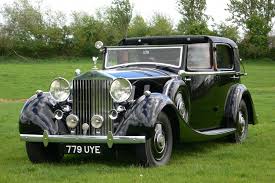The Maharaja’s Rolls Royce: The Era of Luxury Cars in Royal India

Introduction
The association of India’s Maharajas with Rolls Royce tells a legendary tale of grandeur and prestige. These luxury automobiles served not just as a means of transport but as a symbol of immense wealth and power. During the early 20th century, Indian royalty adorned their palaces with extravagant cars, often custom-designed to suit their lavish lifestyles. Rolls Royce, the pinnacle of automotive excellence, found its way into the grand garages of numerous princely states, showcasing the unmatched affluence of Indian Maharajas.
The Arrival of Rolls Royce in India
The fascination of Indian rulers with Rolls Royce began in the early 1900s when the British luxury car manufacturer established itself as the epitome of sophistication. Maharaja Pratap Singh of Jammu and Kashmir introduced Rolls Royce in India, paving the way for an elite trend among the royals. Soon, princely states such as Hyderabad, Mysore, Gwalior, Patiala, and Bikaner acquired custom-made Rolls Royce cars, each one more extravagant than the last.
Symbol of Power and Prestige
For the Indian Maharajas, owning a Rolls Royce meant more than just a status symbol—it reflected their opulence and influence. They meticulously customized these cars with:
- Gold-plated interiors
- Handwoven silk upholstery
- Ivory inlays and gemstone embellishments
- Expansive silver trays and concealed weapon compartments
Many Maharajas owned entire fleets of Rolls Royce cars, each designed for different ceremonial and leisure purposes. These luxurious vehicles often appeared in palatial processions and hunting expeditions, becoming a common spectacle in royal India.
Fascinating Stories of the Maharajas and Rolls Royce
The royal connection with Rolls Royce led to many intriguing tales that highlight the grandeur and defiance of Indian rulers.
Maharaja of Alwar’s Revenge
One of the most famous stories revolves around Maharaja Jai Singh of Alwar. During his visit to London in the 1920s, a Rolls Royce salesman insulted him by assuming he could not afford the car. In response, the Maharaja purchased multiple Rolls Royce cars and later used them as garbage collection vehicles in Alwar. This act of retaliation shocked the British automobile industry and prompted an official apology from Rolls Royce.
Maharaja of Patiala’s Spectacular Fleet
Maharaja Bhupinder Singh of Patiala, known for his extravagant lifestyle, built one of the most magnificent collections of Rolls Royce cars. His customized fleet included bulletproof and gold-adorned vehicles, some of which he used exclusively for tiger hunting expeditions.
The Nizam of Hyderabad’s Priceless Possessions
The Nizam of Hyderabad, one of the richest men of his time, loved luxury automobiles. He owned over 50 Rolls Royce cars, many featuring exquisite gold and silver detailing. His chauffeurs, dressed in regal attire, drove these magnificent vehicles, further elevating their grandeur.
Customizations Fit for a King
Each Rolls Royce owned by Indian royalty featured meticulous craftsmanship and unique modifications. Some of the most extraordinary enhancements included:
- Royal Emblems and Insignias – Most Maharajas had their personal insignia engraved on their cars.
- Convertible Hunting Cars – Specially designed Rolls Royce vehicles included gun racks and high seats for hunting expeditions.
- Palace on Wheels – Some models featured mini bars, intricate woodwork, and spacious reclining seats for comfort during long journeys.
Rolls Royce and Indian Royalty Today
Though the era of princely states has long faded, the legacy of Rolls Royce in India remains strong. Many of these vintage cars now sit in private collections and museums. Enthusiasts can visit places like Taj Falaknuma Palace in Hyderabad and the Vintage and Classic Car Museum in Udaipur to witness these spectacular vehicles.
Additionally, modern Indian billionaires and celebrities continue the tradition by acquiring the latest Rolls Royce models, keeping the connection between the elite and this prestigious automobile brand alive.
Conclusion
The story of Rolls Royce in royal India represents magnificence, prestige, and historical significance. From extravagant processions to legendary tales of defiance, these luxury cars served as more than just vehicles; they reflected the Maharajas’ extravagant lifestyles. Even today, the aura surrounding the Maharaja’s Rolls Royce remains an enduring symbol of India’s royal past, immortalized in history as the golden era of luxury automobiles.
The Maharajas may have faded into history, but their legacy, epitomized by their magnificent Rolls Royce collections, continues to inspire automobile enthusiasts and history buffs worldwide.


